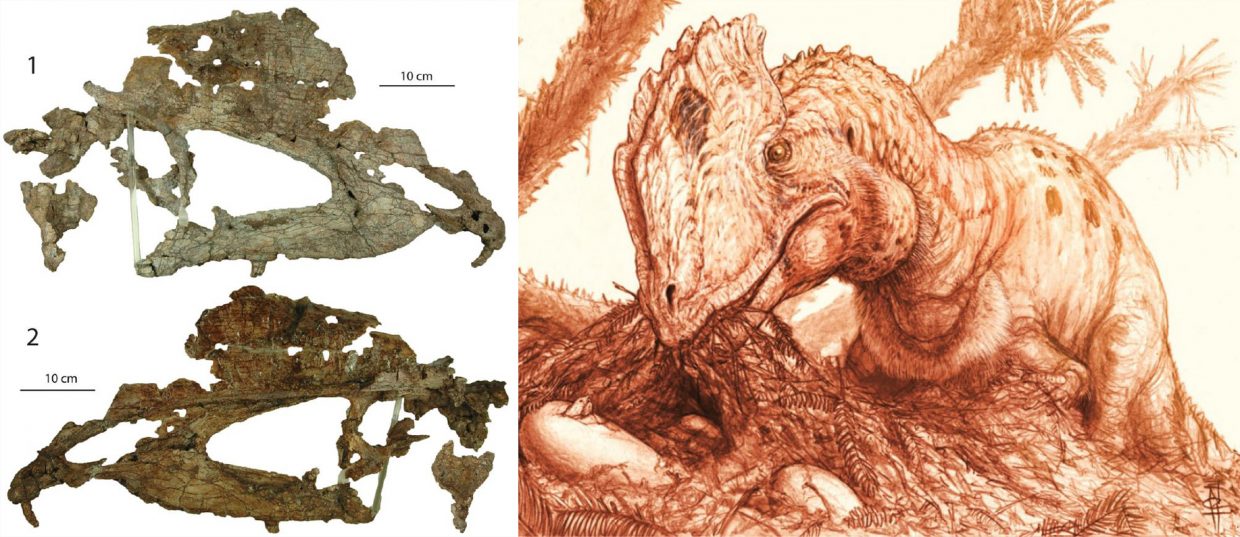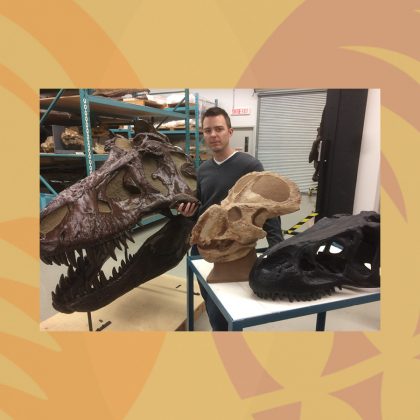Towards a more complete understanding of the meat-eating dinosaur Dilophosaurus wetherilli
The Early Jurassic meat-eating dinosaur Dilophosaurus wetherilli is a common figure of many dinosaur movies, books, art, and toys. The distinctive two crests on its head, for which Dilophosaurus owes its name, are unique among dinosaurs and make the animal fascinating to the fossil enthusiast and paleontologist alike. Despite the fact that it represents one of the most complete early theropod dinosaurs (the group to which Allosaurus, Tyrannosaurus, and birds also belong), little has been written on the skeletal anatomy of Dilophosaurus since it was first introduced in 1954, and three new specimens have been found that were not included in the later description of the original bones in 1984.
The first two specimens of Dilophosaurus wetherilli were found in the Kayenta Formation near Tuba City, Arizona by a Navajo man named Jesse Williams, who was put in contact with Dr. Samuel Welles at the University of California Museum of Paleontology. Welles and his team excavated the two skeletons, which were brought to Berkeley and originally called Megalosaurus, because Welles thought they resembled the English theropod of that genus and because it was not apparent that the fragmentary skull bore the distinctive crests. A third specimen was found in 1964 with half of a complete skull, so Welles renamed the animal Dilophosaurus. Further, two specimens, including that of a juvenile, were found southeast of Tuba City by Dr. Timothy Rowe and his crew from the Texas Vertebrate Paleontology Collections in the late 1990s and 2000.
A thorough anatomical description of the five known specimens of Dilophosaurus wetherilli indicates that it has a number of features unique to its species and support the hypothesis that it is more closely related to later Jurassic theropods like Allosaurus than it is Triassic theropods like Coelophysis. Each of the two crests on the top of the head is formed by three bones that fuse together and are confluent with the sinus cavity on the snout of the animal. Along with extensive bony struts and hollows in the backbones that would have housed air sacs, this suggests that Dilophosaurus had a bird-like respiratory system and would have been an active macropredator in the Early Jurassic of what is now North America. A similar air sac system is present in other large theropods as well as the long-necked sauropodomorph dinosaurs, suggesting that the development of such a respiratory system played a role in dinosaur groups reaching large sizes around the end-Triassic mass extinction nearly 201 million years ago.
The full paper “A comprehensive anatomical and phylogenetic evaluation of Dilophosaurus wetherilli (Dinosauria, Theropoda) with descriptions of new specimens from the Kayenta Formation of northern Arizona” by Adam D. Marsh and Timothy B. Rowe is published in Journal of Paleontology and is available Open Access here.
All of the specimens of Dilophosaurus wetherilli housed at the University of California Museum of Paleontology and Texas Vertebrate Paleontology Collections remain property of the Navajo Nation. Any persons wishing to conduct geologic investigations on the Navajo Nation must first apply for and receive a permit from, P.O. Box 1910, Window Rock, AZ 86515 and telephone number (928) 871-6587.

Read other blog posts from Journal of Paleontology here
or view all blog posts from the Paleontological Society Journals





